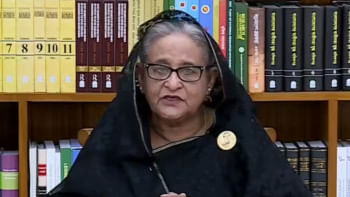LTTE once seemed invincible
The final defeat of Sri Lanka's Tamil Tigers has brought an end to one of the world's most brutal ethnic conflicts and the demise of one of its most formidable and disciplined rebel outfits.
Just two years ago, the Liberation Tigers of Tamil Eelam (LTTE) appeared indestructible, controlling a large swathe of territory in the north and east of the island with all the trappings of a separate state.
Formed by Velupillai Prabhakaran, the Tigers spent more than 30 years confounding expectations of their military defeat, but a sustained offensive by government troops saw them cornered, broken and finally vanquished.
An 11th-hour rebel offer to lay down their weapons went unheeded as the Sri Lankan military ordered a last assault that wiped out the entire LTTE leadership, including Prabhakaran, and 200 plus diehard fighters guarding them.
The death of Prabhakaran, who was shot while trying to flee in an ambulance, would appear to scupper any short-term possibility of the LTTE re-emerging as a depleted guerrilla force.
In the fight for a separate Tamil homeland, Prabhakaran, 54, had refined the use of suicide bombers who carried out deadly attacks against high-profile targets, including spectacular strikes against economic installations.
Former Indian prime minister Rajiv Gandhi was assassinated by a female Tiger suicide bomber in 1991, in retaliation for sending Indian peacekeepers to Sri Lanka in 1987, who ended up fighting the rebels.
The Tigers were also blamed for the 1993 killing of Sri Lankan president Ranasinghe Premadasa and the bombing of the central bank which left 90 dead.
They had their own naval unit, the Sea Tigers, and even managed to smuggle in light aircraft and launch the Air Tigers -- an air force capable of hitting as far south as the capital and then returning to jungle airstrips unscathed.
In one of their most audacious attacks, the rebels blew up more than a dozen fighter aircraft at a military base just north of Colombo in 2001 and destroyed six passenger airliners parked at the country's only international airport.
The Tigers had been condemned for their use of suicide bombers and child soldiers, but they had the backing of the international community when Oslo-backed peace talks were under way from 2002.
Those negotiations collapsed and the process ended in January 2008, when President Mahinda Rajapakse pulled out of a moribund truce.
Government forces entered the city of Kilinochchi -- the LTTE's political headquarters -- in January after the biggest offensive in the history of what had become Asia's longest running ethnic conflict.
In his annual speech in November, Prabhakaran vowed to defend his territory and suggested that the rebels would revert to hit-and-run attacks as their area shrank.
The end came with the last couple of hundred LTTE fighters controlling an area no larger than a football field.
Observers partly attributed the Tigers' spectacular collapse to over-confidence.
"They projected a facade of invincibility," retired army brigadier general Vipul Boteju told AFP. "They had also underestimated the military, which had learnt from their mistakes in the past."
The rebels also suffered internal problems, with signs of dissent around Prabhakaran -- whose de facto number two, Vinayagamoorthy Muralitharan, defected to the government in 2004.
On the international front, the LTTE were outlawed as a foreign terrorist organisation by the United States, European Union, Australia and India.
This in turn led to more intelligence sharing on rebel arms procurement overseas and a squeeze on the outfit's lucrative international fund-raising network.

 For all latest news, follow The Daily Star's Google News channel.
For all latest news, follow The Daily Star's Google News channel. 



Comments